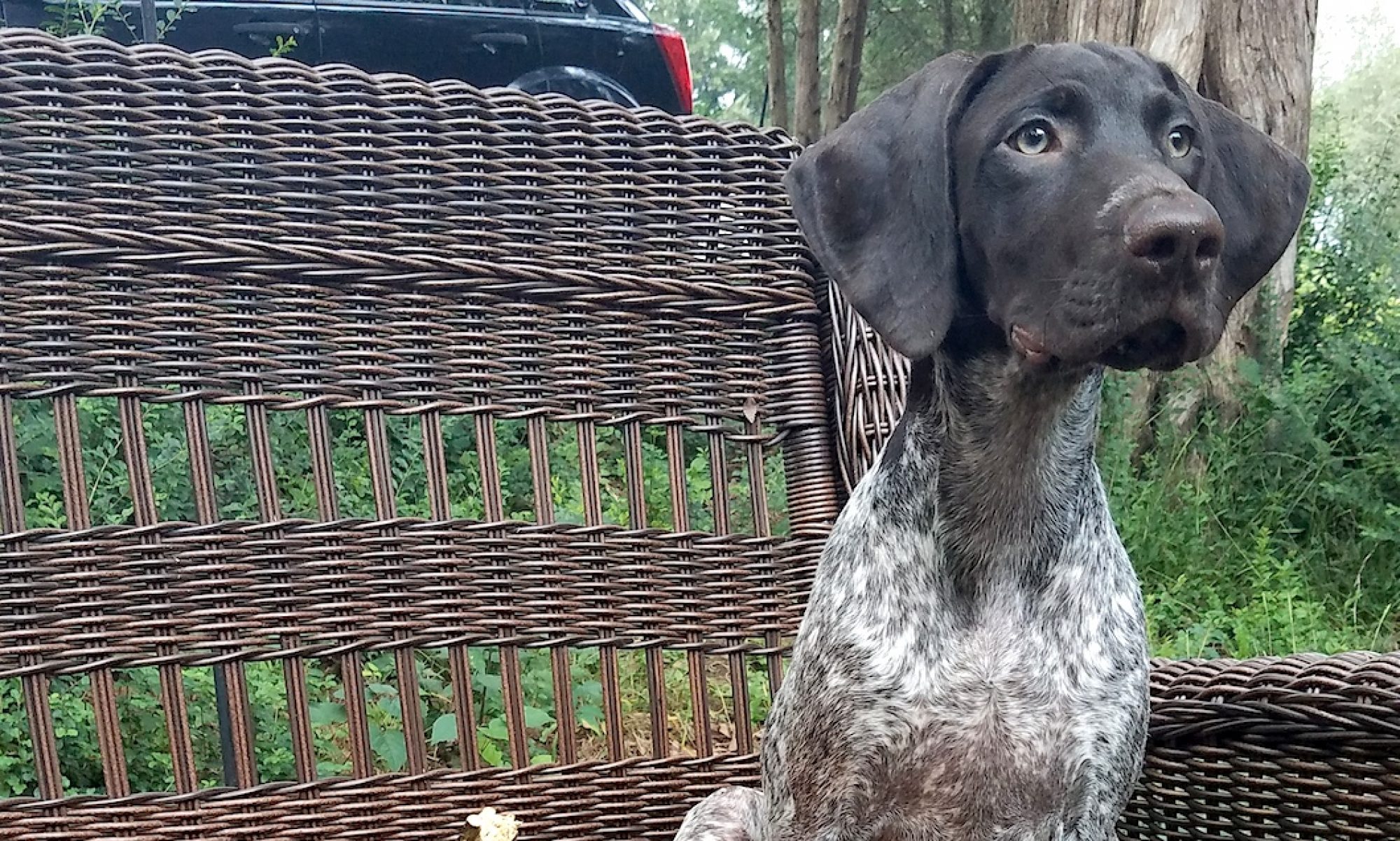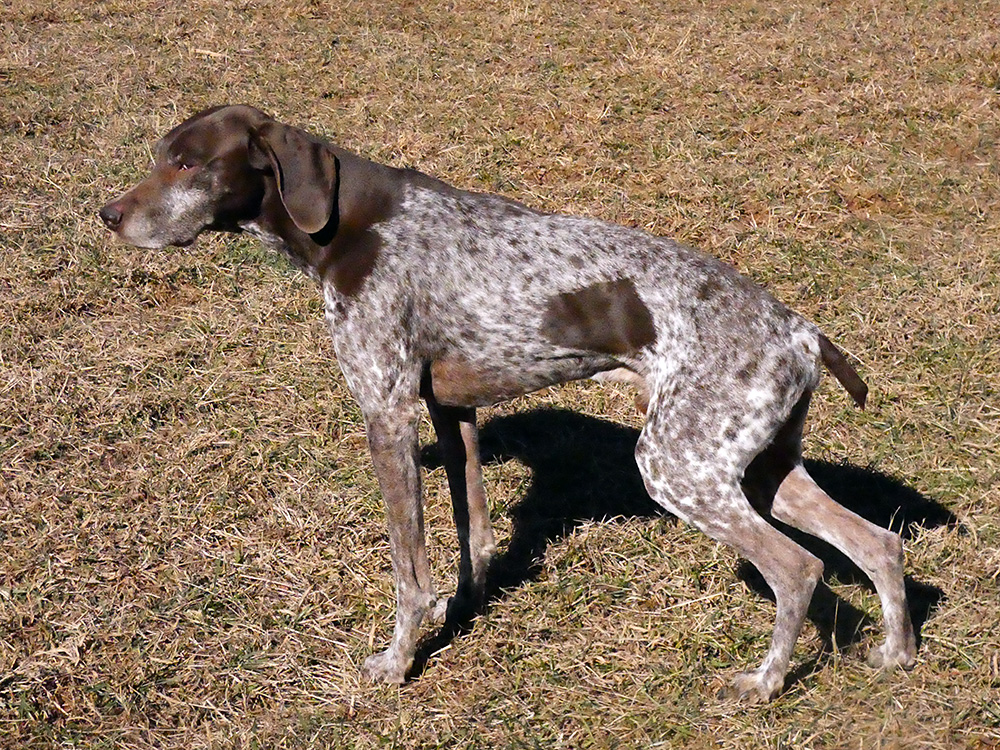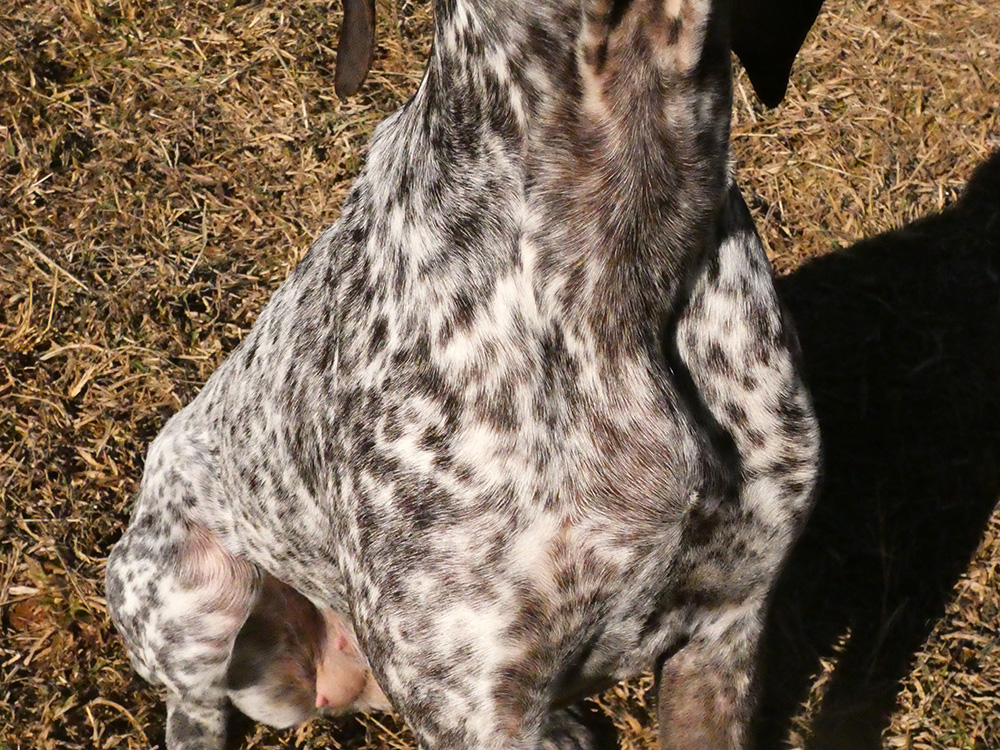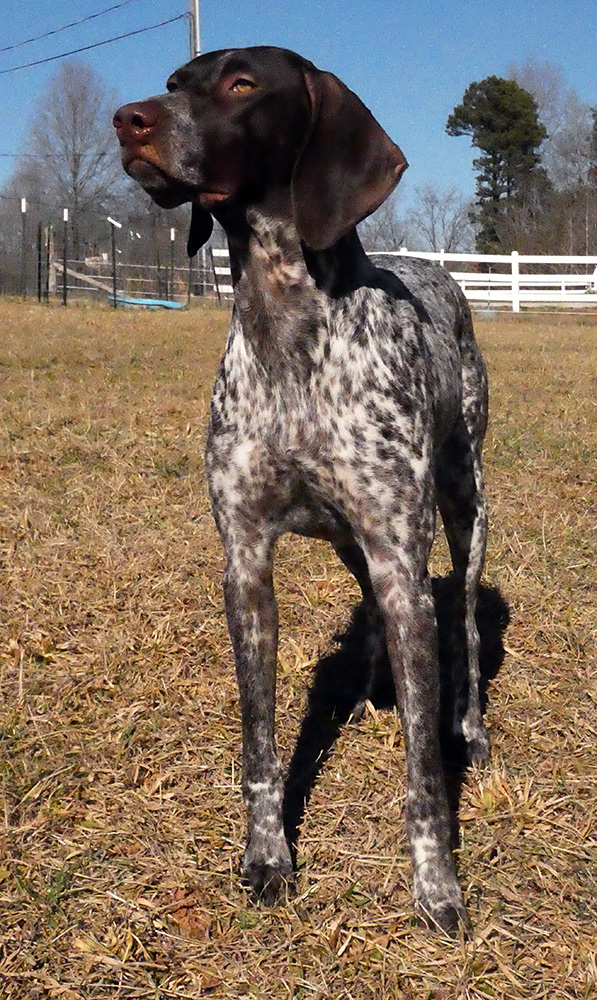Technically German Shorthaired Pointers only come in one color, LIVER.
Stick with me here…
 Liver is a brown with reddish tinge of some level.
Liver is a brown with reddish tinge of some level.
Liver on GSPs can be extremely dark where it seems nearly black, or much lighter where it looks like a milk chocolate.
Some of you are most certainly saying, “Wait a second, I’ve seen black GSPs and lots of GSPs have white!”
Well, I did say, technically.
If you remember back to high school, Black and White are not considered colors because they don’t have a specific radiation wavelength. Instead, black has no wavelength and white has them all.
So, YES!, you can also get a Black German Shorthaired Pointer and in truth, most have some degree of White.
Keep in mind, you get Liver OR Black. Liver and Black do not appear on the same dog together, one is a dominant gene color, the other is recessive.
Before we go further, there is a fourth and final “color” in GSPs… but again, it’s not really a color at all.
Of course I’m talking about ROAN.
Roan is when white hairs and liver (or black on a black dog) are so tightly intermixed, the “color” appears grey.
-
- Liver.
- Liver Roan.
- Liver & White.
- Black.
- Black Roan.
- Black and White.
Lemon GSPs are a rare genetic throwback and NOT accepted in the breed standard.
If a GSP is not in the list above, be cautious, it may not be pure bred.
Now let’s move on to the patterns and markings.
You’ve got Solid color.
Ticking. Which are smaller flecks of color that can be extremely dense or quite sparse. Ticking only appears against the white of a GSP.
and lastly, Patches. Patches can be small or really large and quite irregular in shape. A dog can have a giant irregular patch that covers half his body and two legs. Most folks wouldn’t recognize that as an actual patch… but it is. Technically, a solid dog is a dog covered in one giant patch! 🙂
How bout some visual Examples:
Above: Roka our Solid Black girl. (she actually has a white blaze on her chest, but that marking is common on solids and still qualifies her as a solid color.)
Above: Riggs. Liver Roan. He’s got 1 patch on his left side. (old man trying to stand strong after his spinal injury.)
Notice Riggs’ liver is much lighter than his son’s below.
Above: Blue. Liver and White. He’s got 1 large irregular patch on his right lower side and you can see the start of another patch on the top of his lower back.
Blue has very sparse ticking on his white. Like someone flicked a brush of color toward him when he was born.
 Above: Winc. Liver Roan. Winning Colors has no patches anywhere on her body.
Above: Winc. Liver Roan. Winning Colors has no patches anywhere on her body.
A lot of her body looks Roan, but is really heavy ticking. Remember, Roan, is when the colored and white hairs grow so close they look grey. Notice on her legs, its impossible to see clear definitions of white and liver, her legs look solid grey.
Ticks aren’t perfect splotches of 100% color. The edging of a tick usually blends off a bit and a tick itself might be less than full strength of color in appearance. (go back and take a closer look at Blue’s ticks.)
This means a lot of ticks close together can look real similar to actual roan.
Here’s another shot of Winc’s shoulders. It’s hard to decipher ticking from roan when the ticking is real heavy and breaks up a lot in irregular patterns. The key is looking for a clear field of white–if you see a lot of white, you’re looking at heavy ticking rather than true roan.
Again looking at Winc straight on, her ticking across the shoulders are more apparent in contrast to the roan on her legs and neck.
Much of the time with GSPs you get dogs that are heavy ticked in some areas and actual roan in others.
If you look back at Rigg’s picture above, he has a bunch of larger roan areas, like his lower back that runs down along his left leg.
German Shorthaired Pointer markings are pretty much natural art.
It’s difficult (maybe impossible) to set down a defacto rule on how to define a Liver Roan vs a Liver with heavy Ticking.
Like with Winc, when you get a dog that is half heavy ticking and half roan, which way do you call it?
We tend to identify our dogs by the overall impression.
But at the end of the day, the exact designation only means something on paper.





